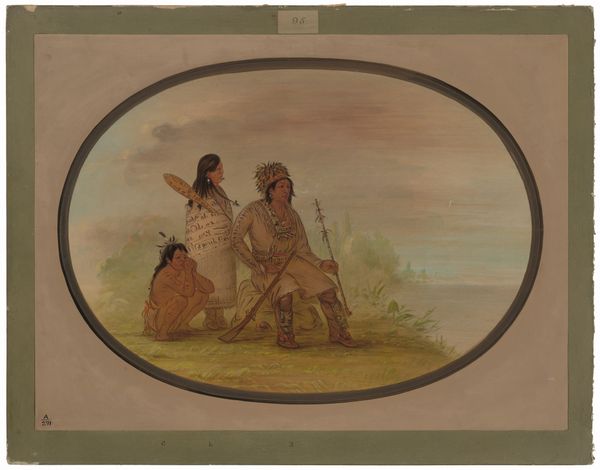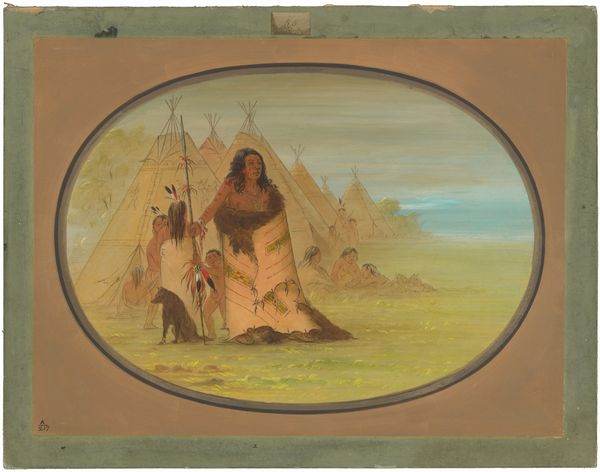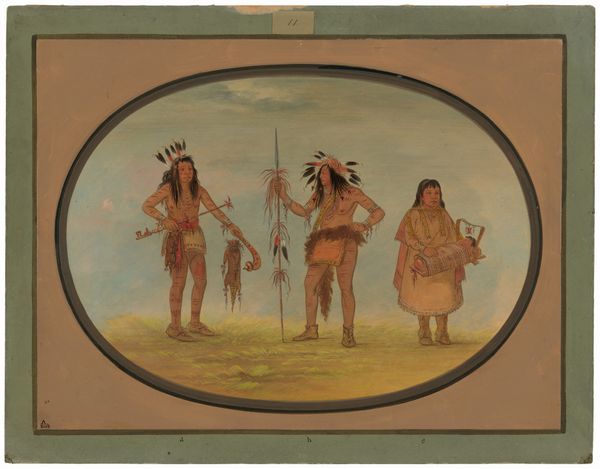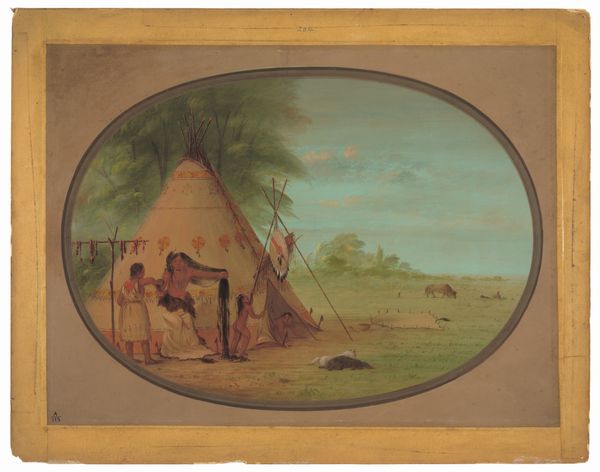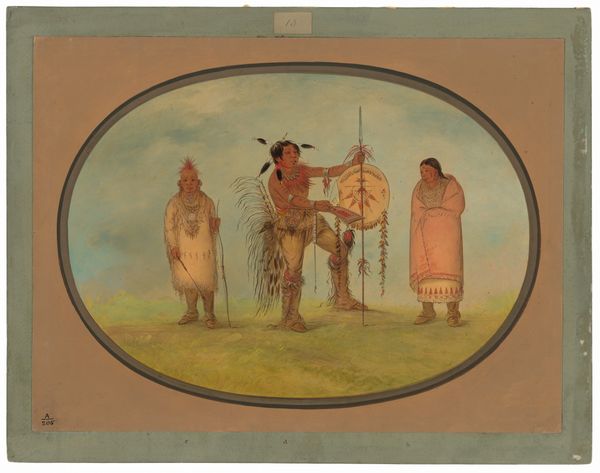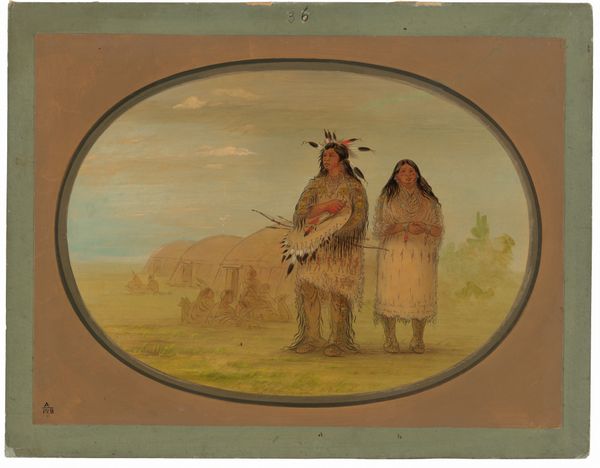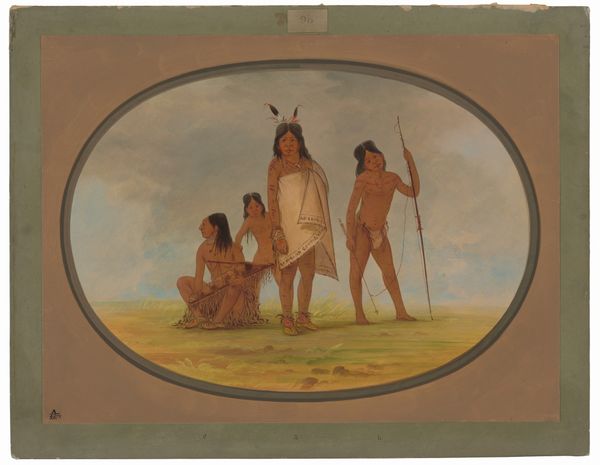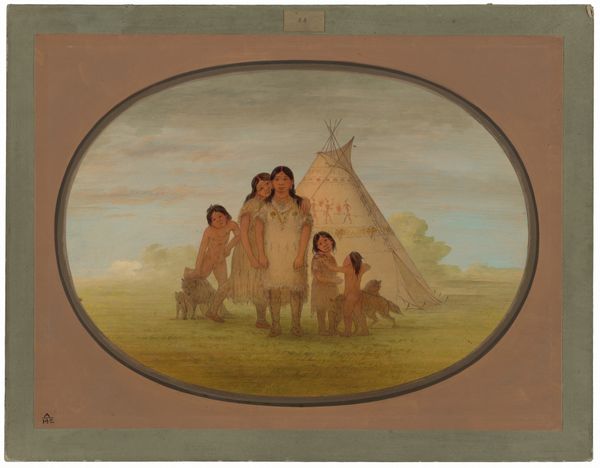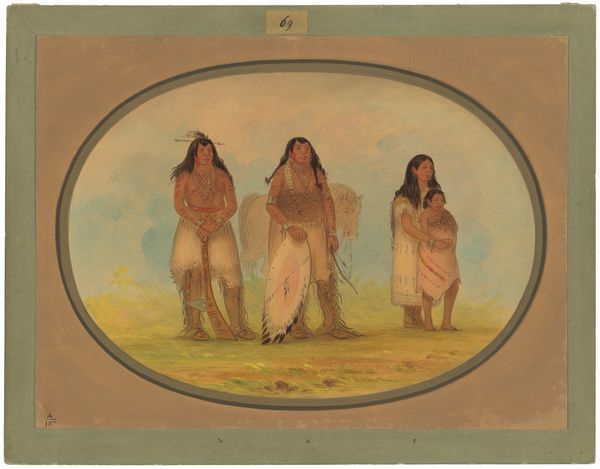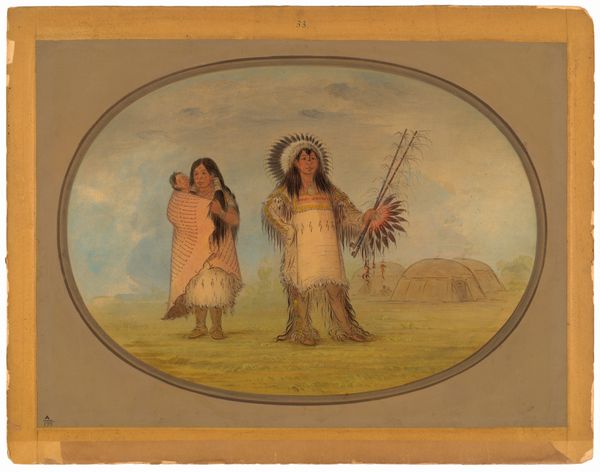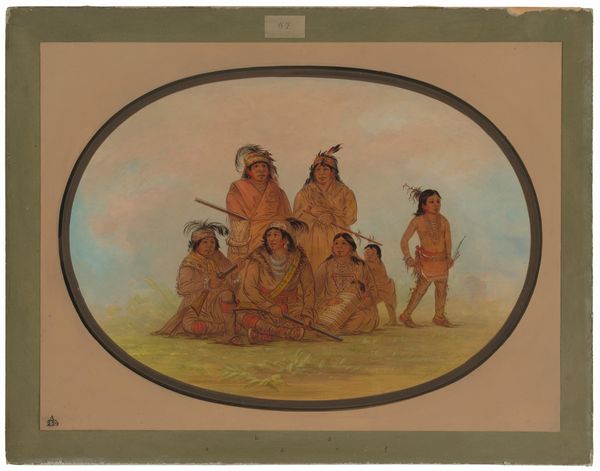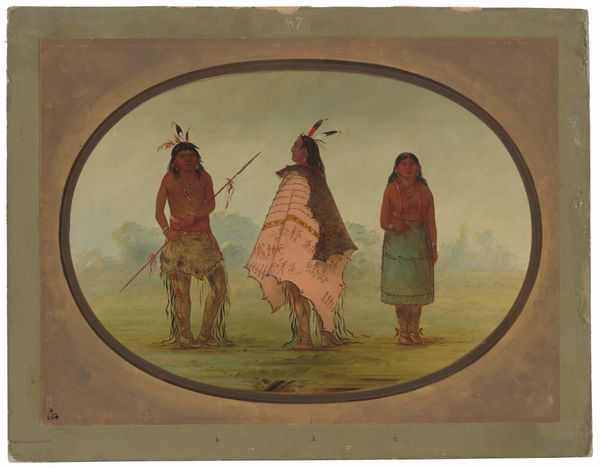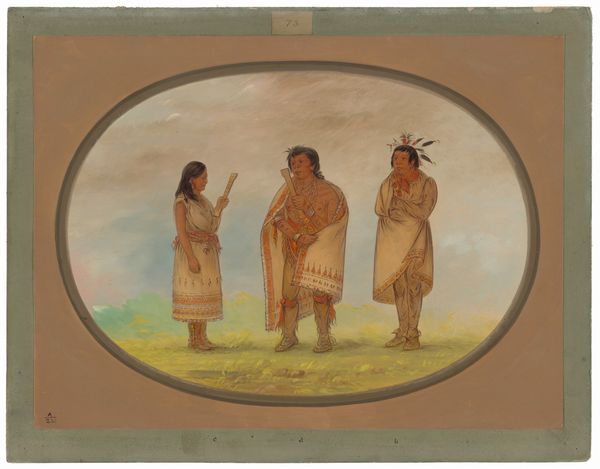
painting, gouache
#
portrait
#
water colours
#
narrative-art
#
painting
#
gouache
#
landscape
#
watercolour illustration
#
watercolor
Dimensions: overall: 46.7 x 62.8 cm (18 3/8 x 24 3/4 in.)
Copyright: National Gallery of Art: CC0 1.0
Curator: The watercolor before us, entitled "Nayas Indians," was created by George Catlin around 1861. Catlin devoted much of his career to documenting Native American life. Editor: There's a real tranquility to this piece. The colors are muted, almost pastel, which creates a serene feeling, despite the narrative details present in the image. Curator: It's part of a larger project, conceived during a period when there was great interest, both scholarly and popular, in the "vanishing race" narrative—a product of the Westward Expansion in America. Catlin, although documenting, was still implicated in this historical moment. Editor: I find myself drawn to the teepee in the background. It’s more than just shelter; it seems to function as a visual representation of community and the continuity of their cultural identity. Even the hanging game speaks to that—sustenance, provision. Curator: Absolutely. Think about the act of display inherent to ethnographic projects like Catlin's. The watercolours like this were also commercial ventures. The paintings served a specific purpose: shaping public understanding. He performed as a mediator, and his interpretations certainly carry inherent biases reflective of the historical context of that era. Editor: Indeed. Look at how the figures are rendered, with an emphasis on their clothing and adornments. It’s about detailing these specific markers, but also capturing their individual essence. The symbols used may not always be literally clear, but the intention is obviously deeper than just mere representation. Curator: Yes, and the composition places them between "civilization," as represented by the distant river activity and what would be considered the "untamed" wilderness – both framing their way of life. Editor: This piece feels particularly evocative as a study in contrasts. Catlin walks the line of participant and observer in "Nayas Indians," allowing us access to his perspective, biases included. Curator: Understanding Catlin's work in relation to the power dynamics and politics of its time is important, though it makes appreciating the sensitivity in some depictions challenging. Editor: Despite my reservations about the romanticism present in such work, these watercolors allow me glimpses into what was and what vanished, triggering consideration, and perhaps ultimately, a greater consciousness about a need for genuine intercultural exchanges.
Comments
No comments
Be the first to comment and join the conversation on the ultimate creative platform.
